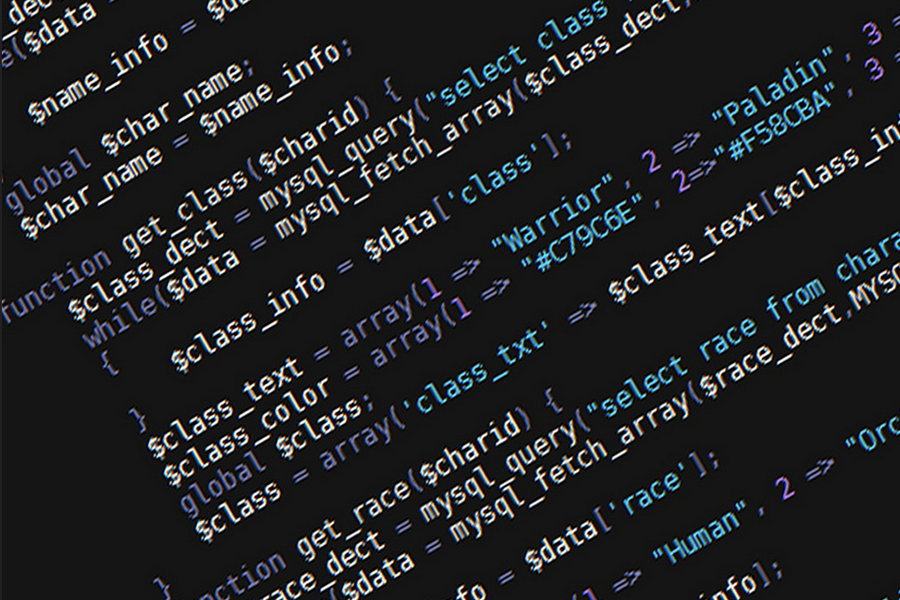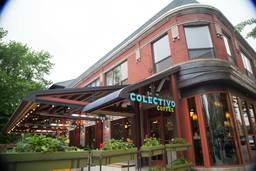Coders Are Becoming the Industrial Workers of the 21st Century. Will They Organize?
Peter Downs

After graduating from college and moving away from his family and his hometown for the first time, Paul found his way into LaunchCode, a training and recruiting program for future coders. An artist, he dived enthusiastically into using code to alter and create images. After he completed the four-month class, LaunchCode placed him in a job at a marketing company that uses templates to build web pages for clients.
Particularly in the beginning of his time there, Paul worked long hours, sometimes round the clock, to meet deadlines, but the company provided coffee and energy drinks to keep him up so he could work and beer to bring him down so he could relax when he was done. He had no family in the town — an older, Midwestern industrial city trying to find the next big thing to replace its lost manufacturing base — and few friends, so he didn’t have any other commitments that might conflict with the long hours. Once a month, he participated in an all-night weekend hackathon to further develop his coding skills.
Paul, which is not his real name, had hoped to stick with the job until the end of his first year. Then he’d quit and use his experience to find something better.
Paul’s experience reflects changes in the American economy that will have the t-shirt-wearing coder with a computer replace the blue-collar wearing machine assembler with a wrench as the archetypal industrial worker. Industry groups predict the demand for coders will create one million new coding jobs by 2020.
The changes now spreading through the economy are similar in many ways to the shifts that swept through the American economy in the early 20th century. The economy then was becoming progressively more machine based, and the people who designed, fabricated and assembled machine parts were becoming more specialized.
Machine builders were replacing machine tenders as the backbone of the industrial economy. People who fabricated, assembled, and repaired machine parts kept commerce moving. They were responsible for transportation, communications, water, electricity, and all of the machines that made modern life easier.
Coding is increasingly occupying the same central place in the 21st century economy that machines held in the 20th. Responsible for telling computers and computer-controlled machines what to do, coders are increasingly writing the commands that control the operations of transportation, communications, water, electricity and manufacturing.
And, just as in the early 20th century, the individual design and crafting of each new electrical switch, lamp or automobile gave way to the mass production of common parts preassembled into standardized switches, lamps and cars, preassembled packets of code increasingly are being used for common purposes.
Along with the standardization of mechanical and electrical designs and parts in the 20th century, the craft of the all-around mechanic or engineer eventually produced a range of more specialized occupations: design engineers, tool and die makers, machinists, assembly workers. Even assembly workers, however, needed to know something about fabrication and how to use tools designed for building machines in order for the whole system to work.
Today, a similar division and specialization is happening in the craft of writing software. Increasingly, software engineers design what the code should do, and in what order, and coders assemble the prewritten pieces to make the design.
Open source hubs such as GitHub and Bitbucket make it easier to find standardized and prewritten code in the public domain that can be used in other projects. IDEs (integrated development environments) for software development, such as PHPStorm or IntelliJ, are getting better and better at finishing common lines of code for coders as they begin to type. And companies often have their own virtual storehouses of proprietary code that they use repeatedly in one project after another as well.
As part of the transition to a machine coding economy, initiatives to make education in coding arts widely available or part of the secondary school curriculum gain traction, as with Made with Code and Coding.org. This mimics the push for education in industrial arts, from the establishment of the first schools to offer industrial education in the 1880s to the birth of the industrial arts movement in 1904 and the passage in 1917 of the Smith-Hughes Vocational Education Act. The Smith-Hughes Act provided the first federal funds for industrial arts classes in high schools.
Colleges, of course, already teach programming and software development, but to a relatively small number of students. Bucking the “college for all” trend, there is a growing opinion in industry that college isn’t necessary for coding. As a first shortcut, modern industry produced for-profit schools to offer vocational courses in coding. “Hack schools” such as General Assembly, Dev Bootcamp, or Mobile Makers charge students $10,000 to $18,000 for four months of vocational training to turn them into coders. Such fees may prove students’ earnestness in applying, but they also restrict the programs’ ability to provide the million coders that industry says it needs.
Mass education is necessary. So the city of Portland teamed with Treehouse, a subscription online coding course, to launch Code Oregon to give unemployed and displaced workers training in coding.
“We want to start the Code-to-Work movement, which will take someone from no experience, to job-ready, to a rewarding career — all without a degree and zero experience. … You just don’t need a computer science degree anymore to get an amazing job in the tech industry,” Treehouse CEO Ryan Carson stated.
The bigger step, however, is to make coding a part of every school’s curriculum, and that push has just started. Code.org, for example, was launched in 2013 with the “vision” that “every student in every school should have the opportunity to learn computer science.
In the early 20th century, machine workers often were part of the sweep of mechanical innovation that produced cars, new machine tools, and electrical appliances. They earned relatively high pay and worked long hours due to the shortage of people able to fill the demand, expected to be devoted to their jobs, much like programmers now.
Early this year, the CEO of one St. Louis-based tech company bragged that his workers were so dedicated, his company had to start serving breakfast and install bunkbeds to make sure that employees got something to eat and grabbed a little sleep. The CEO, Gabe Lozano, said when people interview for a job, “I tell them up front that if your goal is to have a 9-to-5 job and get the best bang for your buck … this is a terrible place to be. But, if your goal is to be in the right side of history, you have made the right choice.”
Tech companies depend on such appeals to mission and passion, and to social isolation, to keep employees satisfied at work. That’s typical of a craft industry where life and work are intertwined and the worker controls the pace of work. As machine industries matured, however, and machine work moved from a craft to a mass industry, workers rebelled against excessive work. They organized to protect their families, homes, and social lives from the all-consuming demands of employers.
For the first third of the 20th century, the American Federation of Labor (AFL) had trouble appealing to the new industrial worker. Soon, however, unionists dissatisfied with the lack of progress in organizing industrial workers formed the Congress of Industrial Organizations (CIO), and unionization swept through the machine industries.
Recent efforts to organize programmers and coders, such the Washington Alliance of Technical Workers sponsored by the AFL-CIO or the Communications, Computer, and Software Workers Industrial Union sponsored by the IWW (Industrial Workers of the World), likewise have met with little success. As coding becomes a mass industry, however, will coders eventually rebel as did industrial workers?
Paul didn’t stay with his job for a year. He lasted nine months before quitting and moving back to his home town.

I hope you found this article important. Before you leave, I want to ask you to consider supporting our work with a donation. In These Times needs readers like you to help sustain our mission. We don’t depend on—or want—corporate advertising or deep-pocketed billionaires to fund our journalism. We’re supported by you, the reader, so we can focus on covering the issues that matter most to the progressive movement without fear or compromise.
Our work isn’t hidden behind a paywall because of people like you who support our journalism. We want to keep it that way. If you value the work we do and the movements we cover, please consider donating to In These Times.




